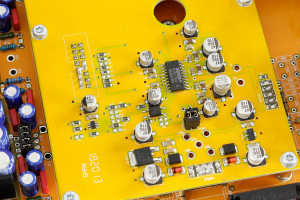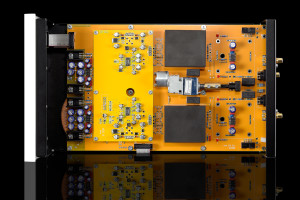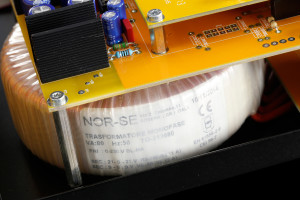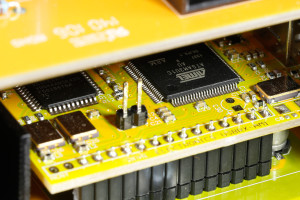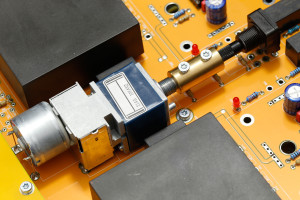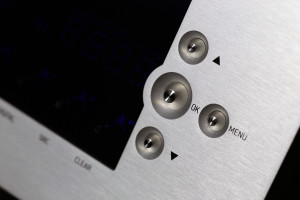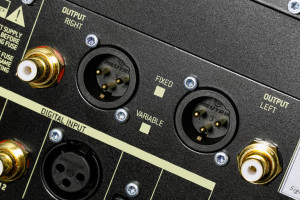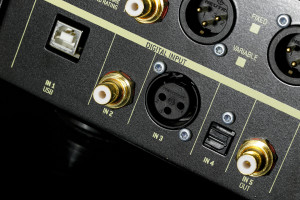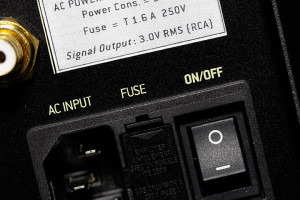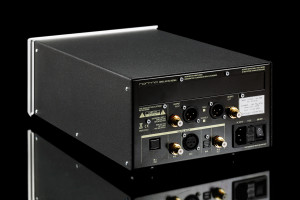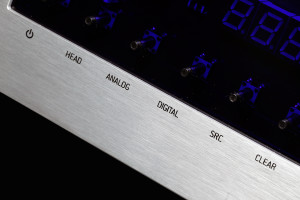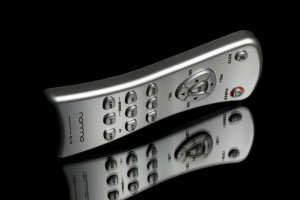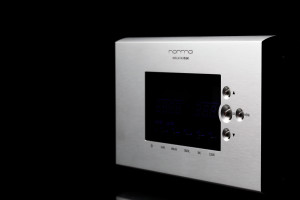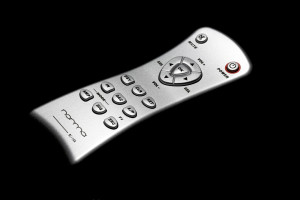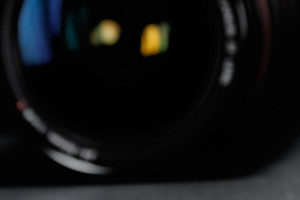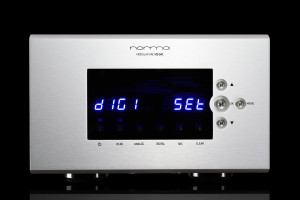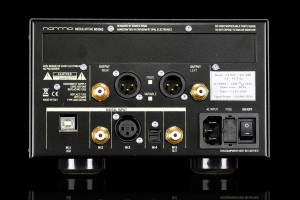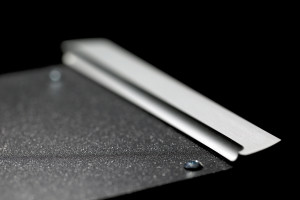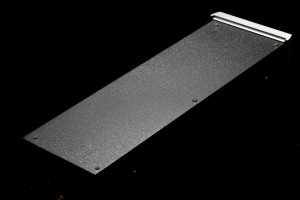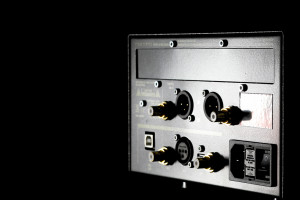Italian beauty element manifests in audio undoubtedly and clearly. Masterclass woodwork and a musical sound signature often serve as a proof, just picture Sonus faber or Unison Research portfolio. Norma Audio operation is yet another of the same origin and its HS-DA1 VAR d/a converter is this review’s main dish. Enjoy.
Introduction
It’s virtually impossible to be aware of every audio manufacture there is, which indicates that there is always a room to explore and sooner or later an interesting finding will reveal itself. When looking form a journalist’s perspective, It might be worth of both time and effort to make a review happen. Things can quickly get somewhat exciting at some point of an investigation, promising discoveries are a part of an audio related job as well. Getting oneself familiarized with a new product can be done via a word of mouth or simply by reading audio related press/blogs/forums etc. But said measures are hands down beaten by a possibility to check a new toy in person, without any predetermined attitude towards in the first place. I enjoy such discovery especially once it turns out to be a real quality performer. That was the case with Norma Audio. I stumbled upon this brand without any planning and reading, it all happened by a mere stroke of luck. OK, to be honest someone pointed me in the right direction and advised that I should pay attention from now on as things will get interesting very soon. And that’s what’s happened indeed.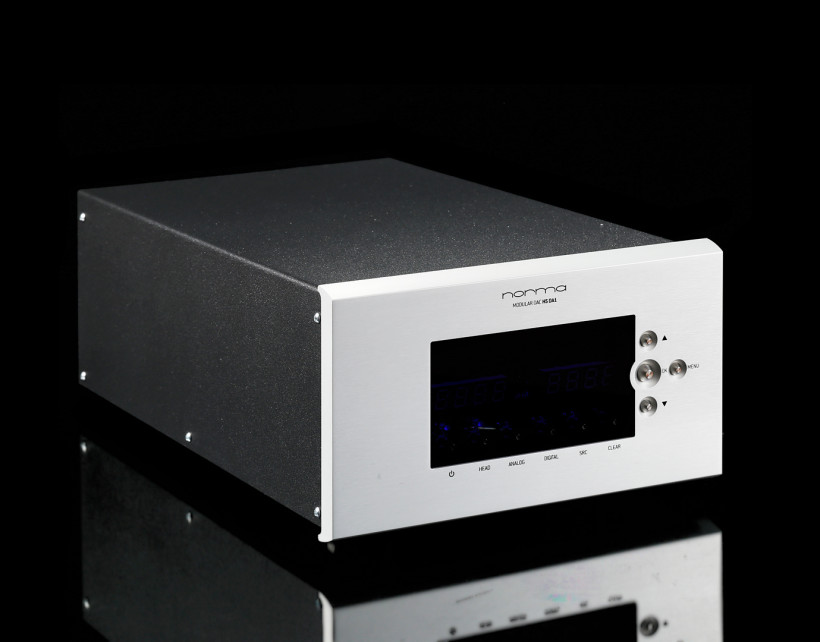 Not too long ago, Xavian’s factory tour was published on 6moons.com. This Czech based audio manufacture’s main man is Roberto Barletta, an extremely gifted engineer. His Italian origin is obviously seen and heard in Xavian’s products. Wooden enclosures and very musical, enjoyable sound is Roberto’s recipe for a success. After several hours of running with a camera from one floor to another, finally the time has come to sit down and relax, have a proper chat with my host and listen to some music. Back then company’s main listening room wasn’t ready yet. But its substitute, namely 20 sq. meters space, did quite a job anyway. And there I encountered Norma Audio products for the very first time.
Not too long ago, Xavian’s factory tour was published on 6moons.com. This Czech based audio manufacture’s main man is Roberto Barletta, an extremely gifted engineer. His Italian origin is obviously seen and heard in Xavian’s products. Wooden enclosures and very musical, enjoyable sound is Roberto’s recipe for a success. After several hours of running with a camera from one floor to another, finally the time has come to sit down and relax, have a proper chat with my host and listen to some music. Back then company’s main listening room wasn’t ready yet. But its substitute, namely 20 sq. meters space, did quite a job anyway. And there I encountered Norma Audio products for the very first time.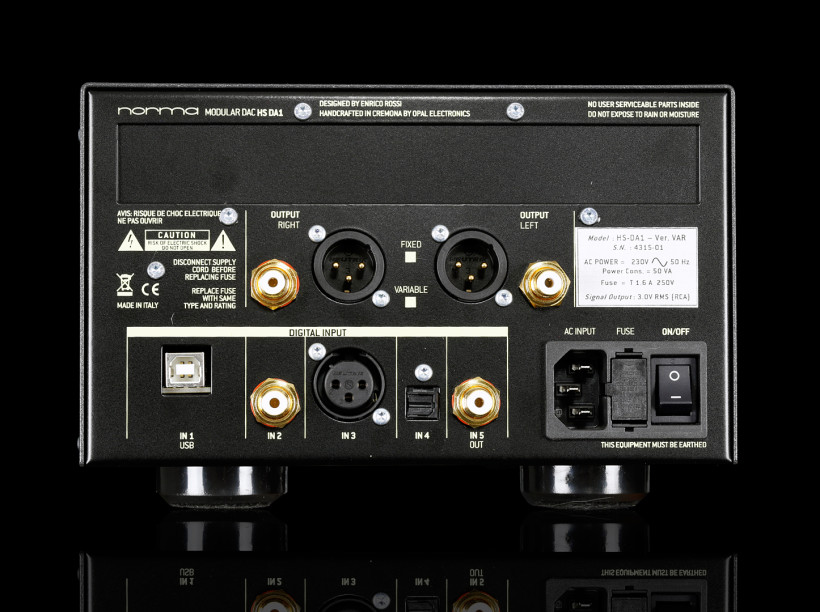 Some standard journalistic questions were asked: “What do you listen to? On what kind of an equipment? How much time per day?” and so on, nothing out of ordinary. Roberto patiently answered each and every one. After gaining some intel about setup he uses on a daily basis and past lots of praises towards Norma Audio on his end, awfully high price was to be expected. Yet nothing like that happened. To be completely fair, €4’000 investment for an integrated amplifier is a lot of dough for an average Joe, true. But not to an audio enthusiast. In many scenarios this kind of an investment may be seen as a real bargain. And when looking at top shelf amplifiers being a financial equivalents to a nice apartment, numbers on Norma Audio price tags are exceptionally down to Earth.
Some standard journalistic questions were asked: “What do you listen to? On what kind of an equipment? How much time per day?” and so on, nothing out of ordinary. Roberto patiently answered each and every one. After gaining some intel about setup he uses on a daily basis and past lots of praises towards Norma Audio on his end, awfully high price was to be expected. Yet nothing like that happened. To be completely fair, €4’000 investment for an integrated amplifier is a lot of dough for an average Joe, true. But not to an audio enthusiast. In many scenarios this kind of an investment may be seen as a real bargain. And when looking at top shelf amplifiers being a financial equivalents to a nice apartment, numbers on Norma Audio price tags are exceptionally down to Earth.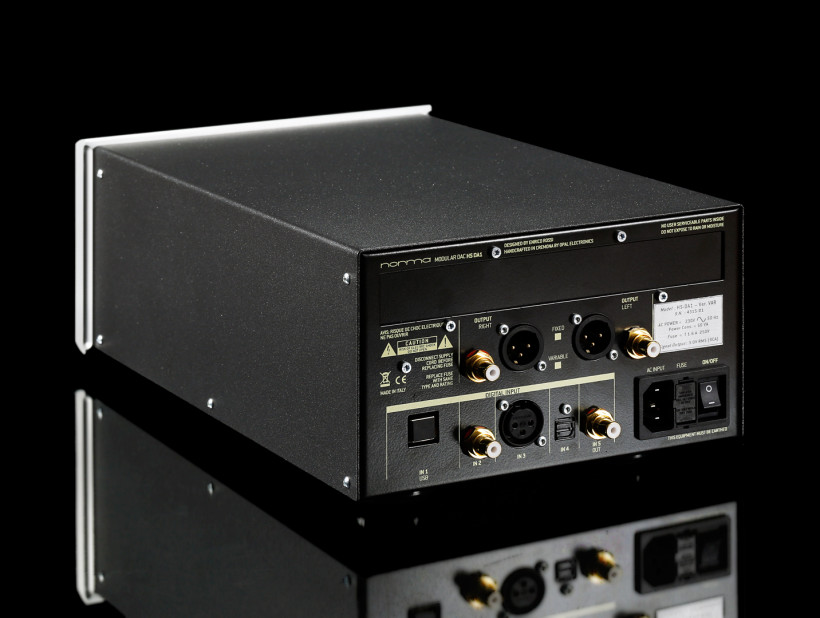 When listening time came, Norma’s REVO IPA-140 integrated amplifier and REVO DAC-1 performed with Roberto’s Perla loudspeakers. The outcome was unexpected to say the least, let me shed some light on the matter. Said speakers were in my crib for quite a while, yet with none of equipment used at that time these performed on such quality level. I was and still am impressed by what I’ve heard back then. We started talking about sources as my host was particularly curious about it. I eagerly confessed what I like, admire and use on a daily basis and what I wouldn’t recommend to the worst enemy. Then he showed me one of official Norma Audio leaflets with one of its digital device’s innards. Not every day one can see this kind of sight. Italian products look as exceptionally from the inside as they do from the outside. Roberto has a thing for beauty and this affliction can be seen in his work. Yet it’s hard to deny that all Italian brands have this factor in common. Picture Unison Research and Sonus faber. These brands scream quality loud and clear. Xavian and Norma Audio undoubtedly fit the description as well, yet for less coin. The latter company obviously is unusually proud of the build quality and after connecting the dots, well, rightfully so. Not to mention that PCM1704 R2R d/a conversion chip pushes all my buttons. Back then I thought that someone knew what he was doing. One doesn’t use this kind of chip unaware of what it is and what it does. Said scenario simply doesn’t occur in the audio nature. Several days after the return I still mentally was in Xavian’s amazing HQ. Yet at the same time Norma Audio memories didn’t perish. The urge to see what’s what got even stronger in the following days. Not one month passed since then and a local distributor of said Italian company revealed itself. Now that was a very pleasant surprise. Though this review is the upshot of my Czech adventure more than anything else.
When listening time came, Norma’s REVO IPA-140 integrated amplifier and REVO DAC-1 performed with Roberto’s Perla loudspeakers. The outcome was unexpected to say the least, let me shed some light on the matter. Said speakers were in my crib for quite a while, yet with none of equipment used at that time these performed on such quality level. I was and still am impressed by what I’ve heard back then. We started talking about sources as my host was particularly curious about it. I eagerly confessed what I like, admire and use on a daily basis and what I wouldn’t recommend to the worst enemy. Then he showed me one of official Norma Audio leaflets with one of its digital device’s innards. Not every day one can see this kind of sight. Italian products look as exceptionally from the inside as they do from the outside. Roberto has a thing for beauty and this affliction can be seen in his work. Yet it’s hard to deny that all Italian brands have this factor in common. Picture Unison Research and Sonus faber. These brands scream quality loud and clear. Xavian and Norma Audio undoubtedly fit the description as well, yet for less coin. The latter company obviously is unusually proud of the build quality and after connecting the dots, well, rightfully so. Not to mention that PCM1704 R2R d/a conversion chip pushes all my buttons. Back then I thought that someone knew what he was doing. One doesn’t use this kind of chip unaware of what it is and what it does. Said scenario simply doesn’t occur in the audio nature. Several days after the return I still mentally was in Xavian’s amazing HQ. Yet at the same time Norma Audio memories didn’t perish. The urge to see what’s what got even stronger in the following days. Not one month passed since then and a local distributor of said Italian company revealed itself. Now that was a very pleasant surprise. Though this review is the upshot of my Czech adventure more than anything else.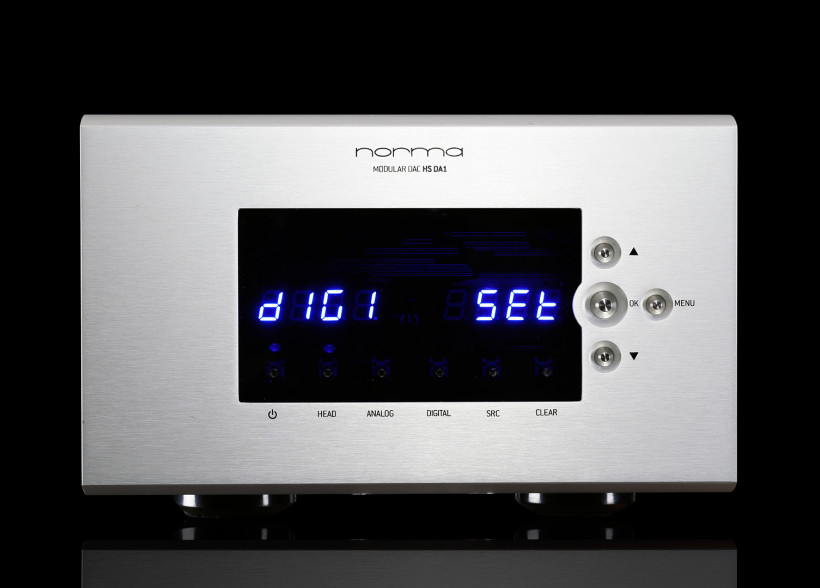 Established in 1987, Norma Audio was a completely independent operation at first. Today it’s a part of a much bigger and measuring devices oriented scheme known as Opal Electronics. Not always but rather often things go downwards once fusion of this sort takes place. And at the same time a wise CEO is the one who allows newly acquired staff to do what they do best instead of assigning them to perform random tasks. Therefore Norma Audio crew does what it always did, namely an audio equipment of high quality. “Norma” word stands for the very same thing both in Italian and Polish languages; a norm or a certain standard. The Italian operation is set in Cremona. Sounds familiar? This picturesque town was a true cradle for world famous composers and luthiers. Monteverdi, Ponchielli, Stradivardi or Amati and Guarneri family names serve as a proof. Norma Audio philosophy isn’t an enigmatic one, it’s actually quite logical succession of the given name. It’s about as little sound interference as possible. The most accurate musical experience there is should be the upshot. Faithful, you say? OK, instead of poking holes let’s all assume that said approach is as honest as it gets, shall we? Even being fully aware of this matter’s extreme subjectivity…
Established in 1987, Norma Audio was a completely independent operation at first. Today it’s a part of a much bigger and measuring devices oriented scheme known as Opal Electronics. Not always but rather often things go downwards once fusion of this sort takes place. And at the same time a wise CEO is the one who allows newly acquired staff to do what they do best instead of assigning them to perform random tasks. Therefore Norma Audio crew does what it always did, namely an audio equipment of high quality. “Norma” word stands for the very same thing both in Italian and Polish languages; a norm or a certain standard. The Italian operation is set in Cremona. Sounds familiar? This picturesque town was a true cradle for world famous composers and luthiers. Monteverdi, Ponchielli, Stradivardi or Amati and Guarneri family names serve as a proof. Norma Audio philosophy isn’t an enigmatic one, it’s actually quite logical succession of the given name. It’s about as little sound interference as possible. The most accurate musical experience there is should be the upshot. Faithful, you say? OK, instead of poking holes let’s all assume that said approach is as honest as it gets, shall we? Even being fully aware of this matter’s extreme subjectivity…
Design
Norma Audio HS-DA1 VAR is all alone in Italian company’s HS series part of the portfolio as for now it’s the first one of this flock. Therefore the assumption of this family getting bigger in not so distant future is rather correct. In its basic and most affordable form known as simply HS-DA1, this review’s main dish is a d/a converter only. In such shape it doesn’t handle volume control, S/PDIF conversion, streaming and so on. It was built to handle one digital task, but to do so in an exceptional fashion. VAR version is a more flexible solution, we’ll get down to that in a bit. HS-DA1 VAR is smaller in comparison to other devices in the manufacturer’s offering and at the same time the only standalone DAC. At least for now. Norma Audio has two bigger and more costly sources but both are CD playback oriented. Measurements of (H x W x D) 12,6 x 21,5 x 35 cm and 5 kg weigh makes HS-DA1 VAR not a toy. Some people might think of it as such as it isn’t as big as pricier REVO series products. Though this kind of said device’s description isn’t correct. PCM1704 and a toy status? No sir, not in my subjective book.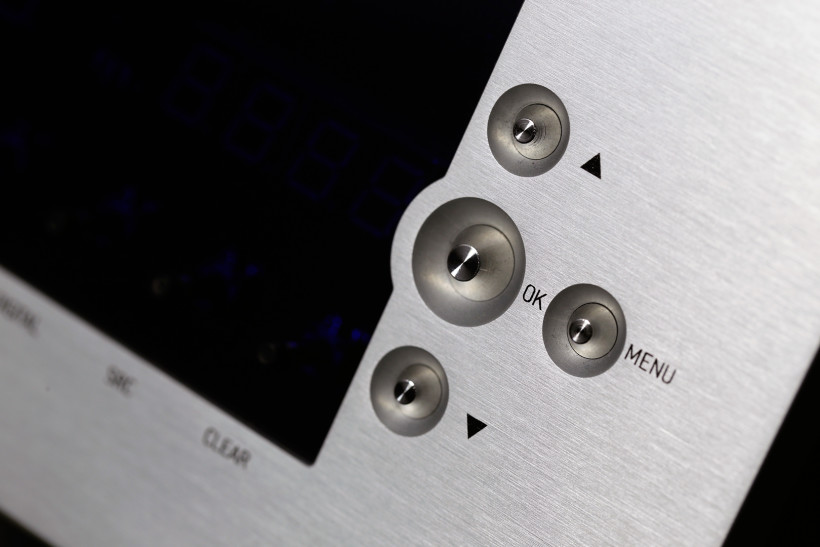 Norma Audio HS-DA1 VAR is a modular device. Potential buyer should define in the very beginning what kind of functions he might need and based on that he can make a choice. There is a price difference between three available options. As I’ve mentioned above, plain HS-DA1 (€2’200) serves as a digital source only. Its more expensive version known as HS-DA1 VAR (€2’600) has an analogue variable outputs, though a user can set these as fixed level ones. VAR version enables the connection with power amplifier directly, without the need of a preamplifier along the road. In such case the volume is handled via built-in vol. control. The most expensive unit out of all three variants – HS-DA1 PRE (€3’600) – is equipped with a board which sports two additional RCA based analog inputs and a pair of 6,3 mm headphone outs. Headphone amplifier is a transistor based class A with no op-amps. The user can choose whether active or passive preamplifier’s mode should be usede.
Norma Audio HS-DA1 VAR is a modular device. Potential buyer should define in the very beginning what kind of functions he might need and based on that he can make a choice. There is a price difference between three available options. As I’ve mentioned above, plain HS-DA1 (€2’200) serves as a digital source only. Its more expensive version known as HS-DA1 VAR (€2’600) has an analogue variable outputs, though a user can set these as fixed level ones. VAR version enables the connection with power amplifier directly, without the need of a preamplifier along the road. In such case the volume is handled via built-in vol. control. The most expensive unit out of all three variants – HS-DA1 PRE (€3’600) – is equipped with a board which sports two additional RCA based analog inputs and a pair of 6,3 mm headphone outs. Headphone amplifier is a transistor based class A with no op-amps. The user can choose whether active or passive preamplifier’s mode should be usede.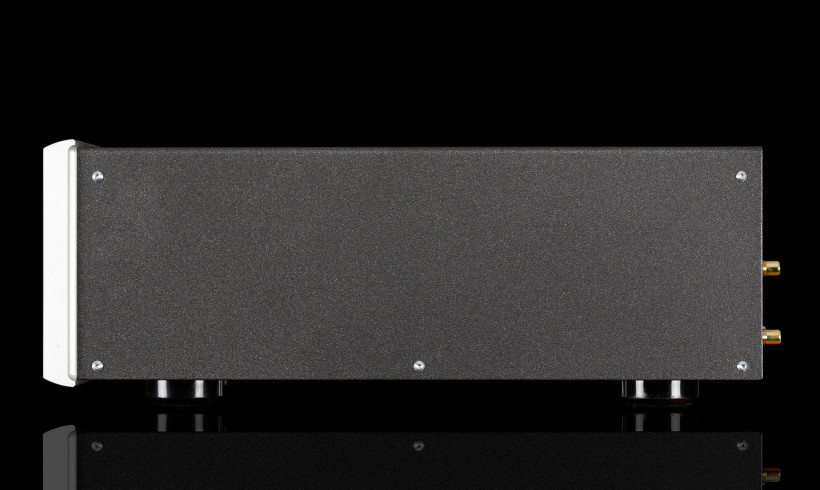 HS-DA1 VAR is very decently built both outside and inside. Thick, massive and brushed aluminium plate serves as a front panel. It fits perfectly to every element nearby. Not too many of these to be honest, yet everything needed is there. Large display nets listener’s attention immediately. It shows all informations in the same fashion Hegel’s devices do, therefore it’s an exceptionally readable case of blue digits on black background. I strongly believe that screen this big is there on purpose aesthetically, smaller one wouldn’t fit as good, of course subjectively speaking. Near the lower ledge of this display there are six buttons mounted in total, yet their descriptions are placed on an aluminium front. From left to right there’s an on/off switch, analog/headphone outs, analog inputs and digital selectors, an upsampling button and finally the one which executes return command. Even though “ANALOG” and “HEAD” buttons do nothing in a VAR version of delivered device, these are mounted nonetheless. Presumably if one would like to have an upgrade performed in the future (this job can be easily done at home), the whole “infrastructure” is already there.
HS-DA1 VAR is very decently built both outside and inside. Thick, massive and brushed aluminium plate serves as a front panel. It fits perfectly to every element nearby. Not too many of these to be honest, yet everything needed is there. Large display nets listener’s attention immediately. It shows all informations in the same fashion Hegel’s devices do, therefore it’s an exceptionally readable case of blue digits on black background. I strongly believe that screen this big is there on purpose aesthetically, smaller one wouldn’t fit as good, of course subjectively speaking. Near the lower ledge of this display there are six buttons mounted in total, yet their descriptions are placed on an aluminium front. From left to right there’s an on/off switch, analog/headphone outs, analog inputs and digital selectors, an upsampling button and finally the one which executes return command. Even though “ANALOG” and “HEAD” buttons do nothing in a VAR version of delivered device, these are mounted nonetheless. Presumably if one would like to have an upgrade performed in the future (this job can be easily done at home), the whole “infrastructure” is already there.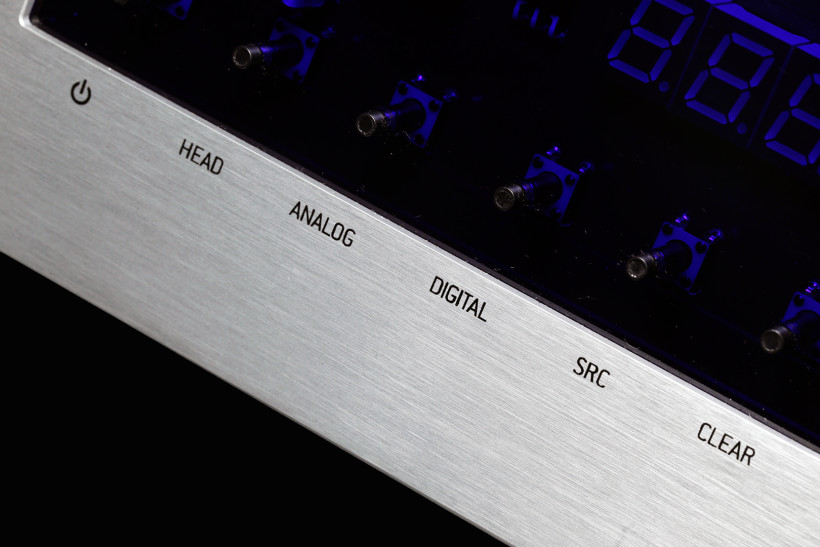 Four navigational buttons (menu, confirmation and two directional ones) are placed on the right side of the screen. These are used if a listener wants to explore a rather generously equipped menu. FSrC function is Norma’s hardware upsampler whereas CLSr allows one to use clock mounted on HS-DA1 or a separate transport. Moving on, DRDN is actually a downsampling algorithm and Fdig serves as a digital filter equipped with two settings: SLOW and SHARP. FANA option turns analogue filtering on/off and is available only in PRE version of a reviewed device. dEFA function stands for polarization inversion if one might need one and dEEN is a rather rarely seen de-emphasis option. There are several things going on on HS-DA1’s back, namely a wide steel cover easily seen a bit below its top end. That’s the place where where additional analog and headphone outs go once someone decides to go PRE road instead of a VAR or vanilla HS-DA1. Though five digital inputs are always there; USB, 2 x coaxial, AES/EBU and one TOSLINK. XLR and RCA analogue outs sit a bit above. In the lower right corner there’s a IEC socket with an easily replaceable fuse and the main on/off switch. The nameplate nearby gives out the information about the main engineer (Enrico Rossi) and the city of origin (Cremona).
Four navigational buttons (menu, confirmation and two directional ones) are placed on the right side of the screen. These are used if a listener wants to explore a rather generously equipped menu. FSrC function is Norma’s hardware upsampler whereas CLSr allows one to use clock mounted on HS-DA1 or a separate transport. Moving on, DRDN is actually a downsampling algorithm and Fdig serves as a digital filter equipped with two settings: SLOW and SHARP. FANA option turns analogue filtering on/off and is available only in PRE version of a reviewed device. dEFA function stands for polarization inversion if one might need one and dEEN is a rather rarely seen de-emphasis option. There are several things going on on HS-DA1’s back, namely a wide steel cover easily seen a bit below its top end. That’s the place where where additional analog and headphone outs go once someone decides to go PRE road instead of a VAR or vanilla HS-DA1. Though five digital inputs are always there; USB, 2 x coaxial, AES/EBU and one TOSLINK. XLR and RCA analogue outs sit a bit above. In the lower right corner there’s a IEC socket with an easily replaceable fuse and the main on/off switch. The nameplate nearby gives out the information about the main engineer (Enrico Rossi) and the city of origin (Cremona).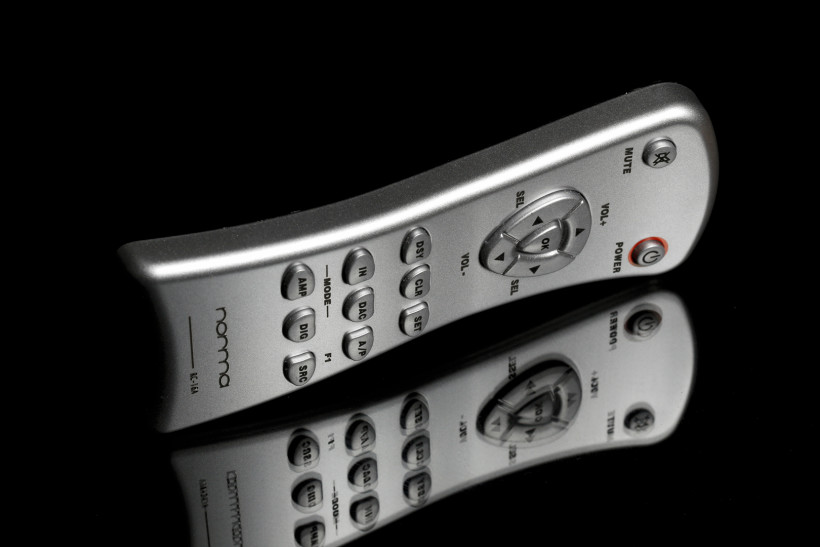 HS-DA1 VAR’s innards are a sight to be seen. Those might look rather ordinarily on marketing leaflets. But once an enthusiast deals with the device’s top cover, he’ll be happy about his findings below. The assembly is very tidy and well-thought. Norma Audio’s source has a modular design as whole innards have been placed on three large PCB’s in sandwich alike fashion. The lowest one sports a toroidal transformer based power supply and a rather big part of digital circuit as well; all receivers and upsamplers are there. Amanero does the job with USB input whereas remaining ones are handled via Texas Instruments SRC4392 chip equipped with sample rate conversion, upsampling and jitter reduction modules. A pair of PCM1704-K d/a converters with DF1704 digital interpolation filters sit in the PCB above. ALPS based volume control with servomotor is seen nearby. The output stage is proprietary, discrete and hidden under fairly large black housings a’la AURALiC’s Orfeo silvery modules. A pair of op-amps provide a negative signal for XLR output, yet if a customer is willing to pay extra, these can be replaced with two additional discrete modules. This solution would lead to four mysterious boxes in total. Though said operation doesn’t change the fact that each HS-DA1 model available is actually a single-ended affair no matter what. Therefore symmetrical output is there only for one’s convenience and nothing else. Also it’s worth mentioning that Norma crew suggests not to use upsampling and to go the good ol’ RCA road.
HS-DA1 VAR’s innards are a sight to be seen. Those might look rather ordinarily on marketing leaflets. But once an enthusiast deals with the device’s top cover, he’ll be happy about his findings below. The assembly is very tidy and well-thought. Norma Audio’s source has a modular design as whole innards have been placed on three large PCB’s in sandwich alike fashion. The lowest one sports a toroidal transformer based power supply and a rather big part of digital circuit as well; all receivers and upsamplers are there. Amanero does the job with USB input whereas remaining ones are handled via Texas Instruments SRC4392 chip equipped with sample rate conversion, upsampling and jitter reduction modules. A pair of PCM1704-K d/a converters with DF1704 digital interpolation filters sit in the PCB above. ALPS based volume control with servomotor is seen nearby. The output stage is proprietary, discrete and hidden under fairly large black housings a’la AURALiC’s Orfeo silvery modules. A pair of op-amps provide a negative signal for XLR output, yet if a customer is willing to pay extra, these can be replaced with two additional discrete modules. This solution would lead to four mysterious boxes in total. Though said operation doesn’t change the fact that each HS-DA1 model available is actually a single-ended affair no matter what. Therefore symmetrical output is there only for one’s convenience and nothing else. Also it’s worth mentioning that Norma crew suggests not to use upsampling and to go the good ol’ RCA road.
Sound
I have a certain expectations towards PCM1704 equipped sources. Yet not without a good reason as I’m quite familiar with several products with these on-board; Reimyo DAP-999EX and Aqua HiFi LaScala MKII d/a converters or HiFi E.T. MA9 and HiFiMAN HM-801 DAP-s to name a few. Price and application differences aside, sound wise there were at least several similarities in all of said products. Yes, of course, DAC chip alone doesn’t do the job as it has to be properly implemented and can represent greatly different engineering approaches. Call this a coincidence or a bias on my end if you want, yet in my case said magical experience was present every time when PCM1704 was on the table. And once this kind of a quality event occurs, one remembers it, at least I do. Obviously history likes to repeat itself as HS-DA1 VAR will be be in my memory long after this assignment is done. And for the very same reasons the rest of PCM1704 based devices known to me are.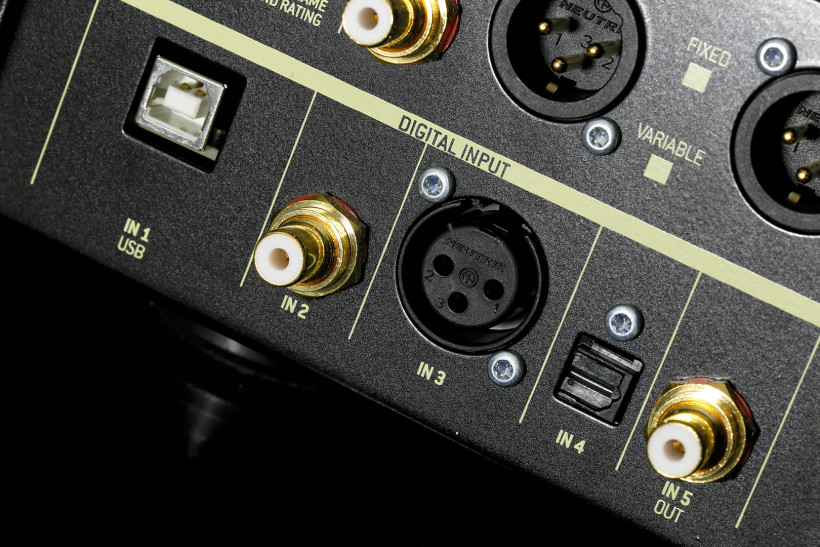 PCM1704 equipped DAC-s known to yours truly do not sound showy or claptrap in any way, this kind of a performance isn’t obviously striking in any shape or form. To understand what’s what, a listener has to get used to and savor it. Vintage R-2R Burr-Brown based sources are said to be rolled-off in the treble and I thought so too in the very beginning. Yet after knowing a fair amount of PCM1704 DAC-s and past accommodation phase it came to me that that’s not the case, but linearity in the whole frequency range and a delicate approach in its top end. In comparison to sources with highs elevated in terms of amount and glitter this comes as no surprise really and that’s the story with HS-DA1 VAR as well. If not for my previous experiences, who knows? Maybe I’d judge this Italian device as lacklustre in treble department in particular? Yet not this time, I knew exactly what’s going on and the trick was to acknowledge that this is no ordinary assignment but the one which requires time. It worked.
PCM1704 equipped DAC-s known to yours truly do not sound showy or claptrap in any way, this kind of a performance isn’t obviously striking in any shape or form. To understand what’s what, a listener has to get used to and savor it. Vintage R-2R Burr-Brown based sources are said to be rolled-off in the treble and I thought so too in the very beginning. Yet after knowing a fair amount of PCM1704 DAC-s and past accommodation phase it came to me that that’s not the case, but linearity in the whole frequency range and a delicate approach in its top end. In comparison to sources with highs elevated in terms of amount and glitter this comes as no surprise really and that’s the story with HS-DA1 VAR as well. If not for my previous experiences, who knows? Maybe I’d judge this Italian device as lacklustre in treble department in particular? Yet not this time, I knew exactly what’s going on and the trick was to acknowledge that this is no ordinary assignment but the one which requires time. It worked.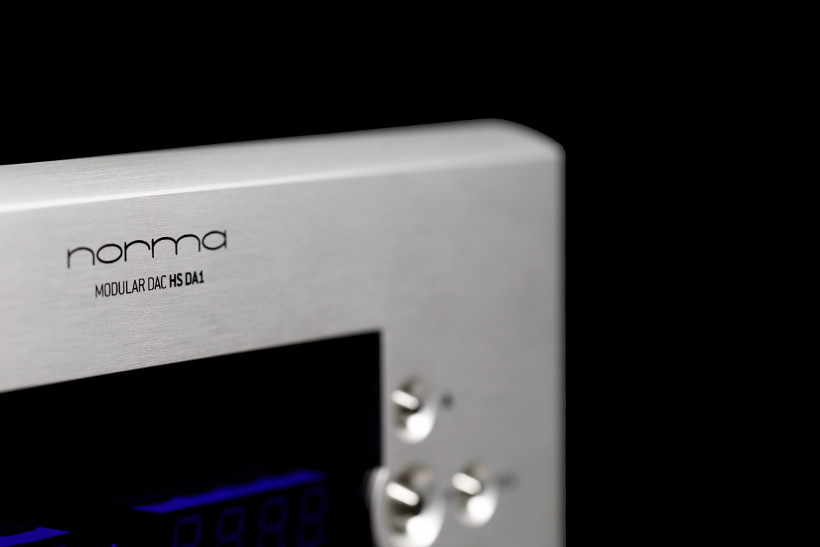 Coherence, saturation and vividness are HS-DA1 VAR’s main things. Yet this has nothing to do with fuzziness as the effect of sweetness elevated more than it should, no sir. The product sounds exceptionally pleasantly and involving. To be honest I believe that I could summarize this review here and many enthusiasts would still have a proper picture of what has happened. They’d knew what to expect out of the Italian device. Yet once this kind of a performance is on the table, words tend to write themselves. HS-DA1 VAR will sound polished, refined and posh to someone in search of a source greatly involving and accurate. After several hours of listening it’s hard not to acknowledge that a golden balance has been achieved. This kind of sound is neither direct, nor punchy or vitreous. It isn’t neither overly cuddly, nor claustrophobic or synthetic and tiresome in the process. It’s simply right, everything checks out, nothing is abnormal whereas saturation, dynamics and some other things work together for a marvelously vivid outcome.
Coherence, saturation and vividness are HS-DA1 VAR’s main things. Yet this has nothing to do with fuzziness as the effect of sweetness elevated more than it should, no sir. The product sounds exceptionally pleasantly and involving. To be honest I believe that I could summarize this review here and many enthusiasts would still have a proper picture of what has happened. They’d knew what to expect out of the Italian device. Yet once this kind of a performance is on the table, words tend to write themselves. HS-DA1 VAR will sound polished, refined and posh to someone in search of a source greatly involving and accurate. After several hours of listening it’s hard not to acknowledge that a golden balance has been achieved. This kind of sound is neither direct, nor punchy or vitreous. It isn’t neither overly cuddly, nor claustrophobic or synthetic and tiresome in the process. It’s simply right, everything checks out, nothing is abnormal whereas saturation, dynamics and some other things work together for a marvelously vivid outcome.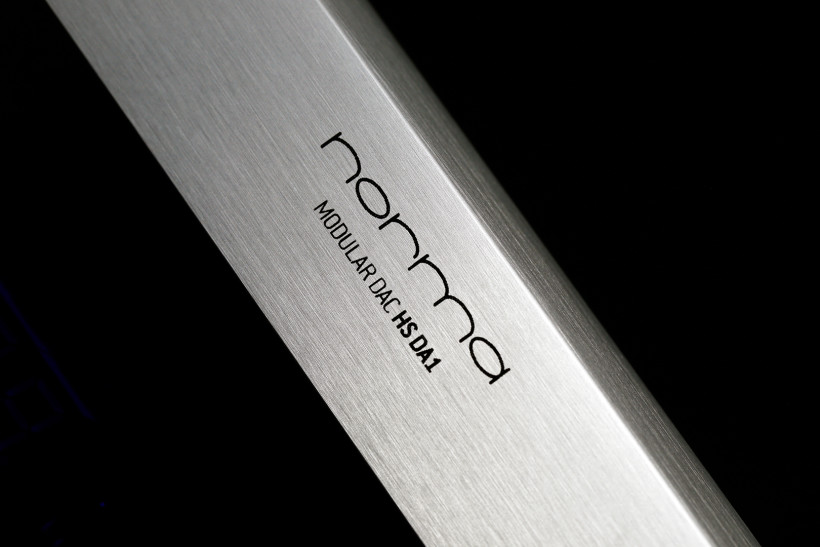 There surely are devices with airier, bigger and lighter soundstage in comparison to HS-DA1 VAR, true. But this DAC is resolving, precise and quite often sounds delicate nonetheless. To get proper density and at the same time to be able to remain transparent? Now that’s an achievement in my book. Thanks to said features the device is easily able to deliver all details there are. Not in a direct fashion but still effortlessly and pleasantly. Both pacing differentiation and instruments texturing are much more noticeable than usual. One doesn’t need to pay full attention and focus constantly to grasp all there is to grasp, things occur naturally and gently. Soundstage is extremely vivid and admirably coherent, literally wet. Vocals aren’t too close, the sensation of these put a bit further than usual is present, but they always remain clearly audible. If things are happening in more distant layers, that’s a part of the whole without any effort on a listener’s end. Another feature worth mentioning is smoothness. It’s tempting to use exquisite descriptive measures like “chocolaty” or “velvety” as these fit. But instead let me just point out that HS-DA1 VAR is a harshness free sounding device. And if on top of said things just a bit of contouring and proper density is added… you get the idea.
There surely are devices with airier, bigger and lighter soundstage in comparison to HS-DA1 VAR, true. But this DAC is resolving, precise and quite often sounds delicate nonetheless. To get proper density and at the same time to be able to remain transparent? Now that’s an achievement in my book. Thanks to said features the device is easily able to deliver all details there are. Not in a direct fashion but still effortlessly and pleasantly. Both pacing differentiation and instruments texturing are much more noticeable than usual. One doesn’t need to pay full attention and focus constantly to grasp all there is to grasp, things occur naturally and gently. Soundstage is extremely vivid and admirably coherent, literally wet. Vocals aren’t too close, the sensation of these put a bit further than usual is present, but they always remain clearly audible. If things are happening in more distant layers, that’s a part of the whole without any effort on a listener’s end. Another feature worth mentioning is smoothness. It’s tempting to use exquisite descriptive measures like “chocolaty” or “velvety” as these fit. But instead let me just point out that HS-DA1 VAR is a harshness free sounding device. And if on top of said things just a bit of contouring and proper density is added… you get the idea.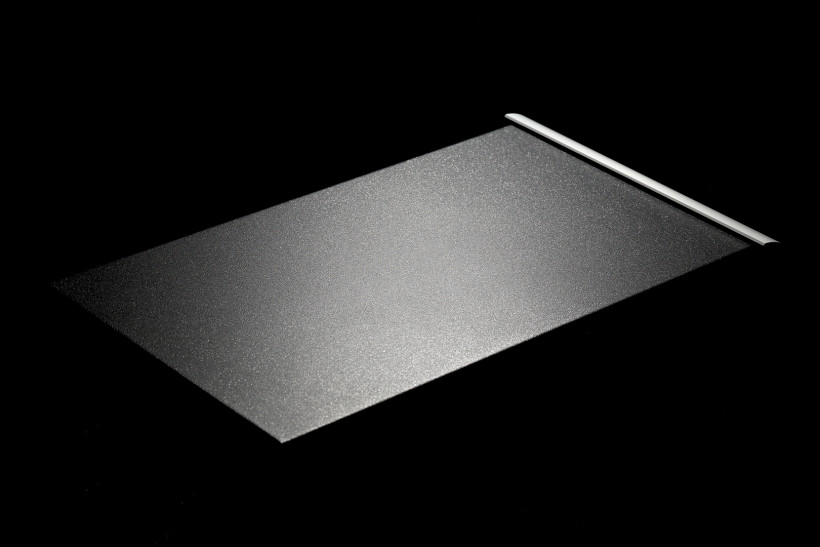 It’s time for some comparisons. LampizatOr Amber was the first opponent. This was rather easy task technically as both devices are equipped with the very same Amanero modules. But at the same time these do sound very differently. HS-DA1 VAR is gentler, at least that’s the notion one gets in the very beginning. Yet things get interesting very fast as this device turns out to be more punchy in the lowest octaves and has midbass less present whereas stronger, feistier attack is the upshot. Amber has lows more bloated, yet not to a level which could cause unpleasant rumble. Italian source tends to put first row a bit further whereas all LampizatOr’s devices have it pictured closer, therefore more direct and… that’s a matter of choice. Yet even though I got used to this Polish DAC’s feature, this time I don’t think it’s better. Different? Yes, but subjectively not better.
It’s time for some comparisons. LampizatOr Amber was the first opponent. This was rather easy task technically as both devices are equipped with the very same Amanero modules. But at the same time these do sound very differently. HS-DA1 VAR is gentler, at least that’s the notion one gets in the very beginning. Yet things get interesting very fast as this device turns out to be more punchy in the lowest octaves and has midbass less present whereas stronger, feistier attack is the upshot. Amber has lows more bloated, yet not to a level which could cause unpleasant rumble. Italian source tends to put first row a bit further whereas all LampizatOr’s devices have it pictured closer, therefore more direct and… that’s a matter of choice. Yet even though I got used to this Polish DAC’s feature, this time I don’t think it’s better. Different? Yes, but subjectively not better.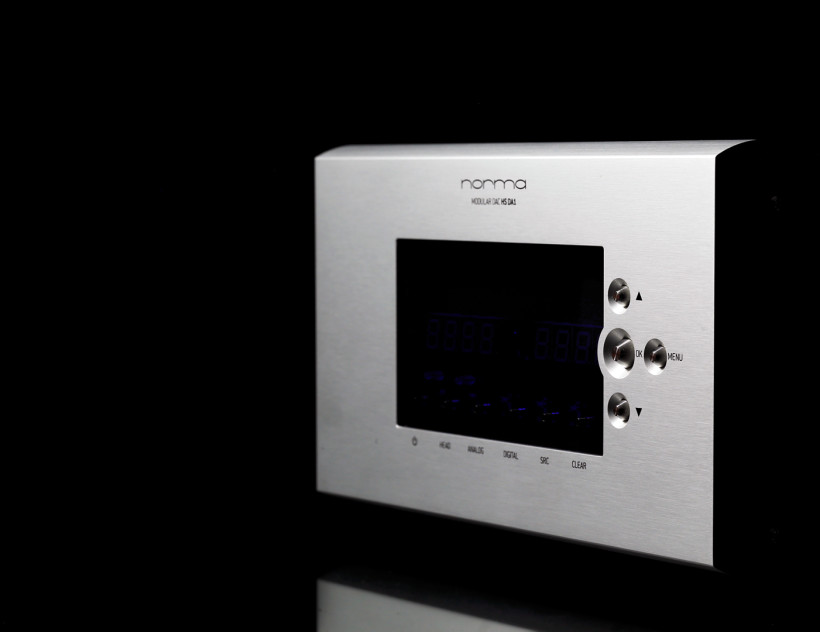 I’ve mentioned above that HS-DA1 VAR has this unique capability to withdraw vocalists yet not at the expense of their clarity or separation and subjectively I like it a lot. Even though this device is a bit darker, it’s also cleaner and it shows nuances more effortlessly, therefore better. LampizatOr Amber is more cosy, warmer source yet not in a plainly fuzzy fashion. None of Łukasz Fikus products are and Italian competitor isn’t dry in comparison. Not at all. Thing is that Polish device simply has the tonal temperature a bit elevated, which some of enthusiasts might fancy more. In the end it’s worth mentioning that Amber sketches bigger phantom images, though both products are similar in terms of soundstage width and height. If I had to pick one, I’d go with HS-DA1 VAR as it is more even, natural and showy-free, yet very smooth and coherent. Though I must confess that Amber’s playback was based on its PCM engine, in order to feed both devices with the same signal, unaltered in any way, shape or form. DSD module is another story, yet this time fully consciously omitted. I strongly believe that all things considered rightfully so.
I’ve mentioned above that HS-DA1 VAR has this unique capability to withdraw vocalists yet not at the expense of their clarity or separation and subjectively I like it a lot. Even though this device is a bit darker, it’s also cleaner and it shows nuances more effortlessly, therefore better. LampizatOr Amber is more cosy, warmer source yet not in a plainly fuzzy fashion. None of Łukasz Fikus products are and Italian competitor isn’t dry in comparison. Not at all. Thing is that Polish device simply has the tonal temperature a bit elevated, which some of enthusiasts might fancy more. In the end it’s worth mentioning that Amber sketches bigger phantom images, though both products are similar in terms of soundstage width and height. If I had to pick one, I’d go with HS-DA1 VAR as it is more even, natural and showy-free, yet very smooth and coherent. Though I must confess that Amber’s playback was based on its PCM engine, in order to feed both devices with the same signal, unaltered in any way, shape or form. DSD module is another story, yet this time fully consciously omitted. I strongly believe that all things considered rightfully so.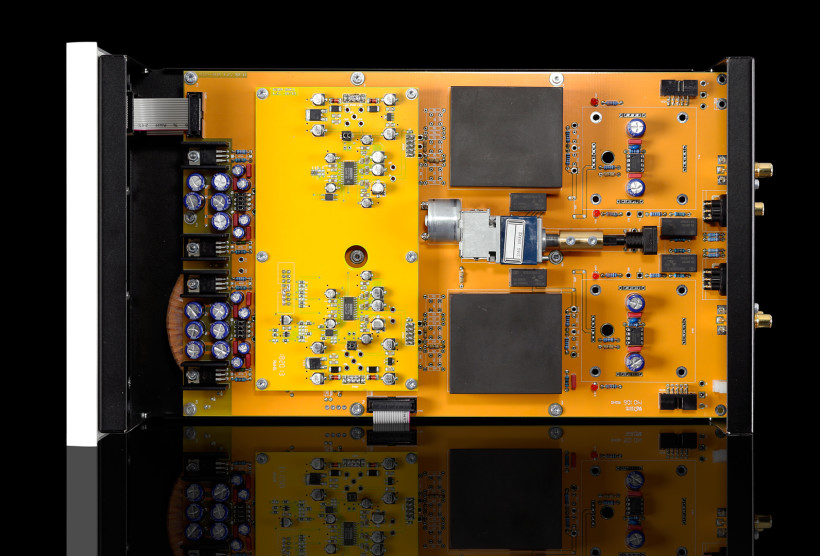 It was a high time to check what the Italian device will bring to the table once Hegel’s H160 d/a conversion is bypassed. So it was a case of Italian-Norwegian affair versus the latter’s performance all alone. Differences between HS-DA1 VAR and Amber presented themselves in a clearly audible fashion. Yet quite drastic turn of events took place during the second part of comparison. I’m against audiophile exaggerations, fairly subtle changes should be described as such. Yet this time I simply shouldn’t use any other words than blunt ones in order to do my job right. A quality gap that occurred this time wasn’t merely a small crack in the ground but one of a canyon’s size. Simple as that. Subconsciously I had a notion that something like that might happen. Even though it’s not wise to assume anything before actual events take place. But I believe that it was of no importance this time as after plugging HS-DA1 VAR on and off in the rig, things literally turned upside down.
It was a high time to check what the Italian device will bring to the table once Hegel’s H160 d/a conversion is bypassed. So it was a case of Italian-Norwegian affair versus the latter’s performance all alone. Differences between HS-DA1 VAR and Amber presented themselves in a clearly audible fashion. Yet quite drastic turn of events took place during the second part of comparison. I’m against audiophile exaggerations, fairly subtle changes should be described as such. Yet this time I simply shouldn’t use any other words than blunt ones in order to do my job right. A quality gap that occurred this time wasn’t merely a small crack in the ground but one of a canyon’s size. Simple as that. Subconsciously I had a notion that something like that might happen. Even though it’s not wise to assume anything before actual events take place. But I believe that it was of no importance this time as after plugging HS-DA1 VAR on and off in the rig, things literally turned upside down. Once HS-DA1 VAR is included in the setup, things in front of a listener grow, metaphorically materialize themselves. Vocalists become much more tangible, closer and greatly separated from the rest of events. It turns out that H160 puts the first row even a bit deeper in comparison. But that’s not all as once Italian device performs, additional layers past it are shown much clearer, therefore the whole spectacle becomes more three dimensional and veracious. Norwegian integrated makes soundstage flatter and if in normal circumstances it isn’t seen as such, one might be used to this kind of presentation after all, HS-DA1 VAR inclusion shows how much more there still can be achieved in this regard. Not to mention greatly elevated vividness, colouring and smoothness that are a part of said Italian package. Another thing it does audibly better than H160’s d/a converter is the ability to marvelously differentiate distance to each instrument alone. Patti Smith’s “Within You Without You” cover originally performed by The Beatles shows how much of a bottleneck Norwegian’s digital circuit actually is in that regard. Next stop is at bass momentum and depth. After HS-DA1 VAR exclusion from the setup and leaving H160 all alone, the most gutsy low end becomes much lighter without proper density and punchness, its above average control is what’s left. I could go on in a similar fashion with the rest of audible FR and describe what’s going on on individual tracks. But there’s no point in it. HS-DA1 VAR simply showed what kind of a quality leap can be done once a proper chance is given. In Norwegian-Italian case described above, additional €2’600 investment in total system value was fully justified. I’d call it a major upgrade with no strings attached soundwise.
Once HS-DA1 VAR is included in the setup, things in front of a listener grow, metaphorically materialize themselves. Vocalists become much more tangible, closer and greatly separated from the rest of events. It turns out that H160 puts the first row even a bit deeper in comparison. But that’s not all as once Italian device performs, additional layers past it are shown much clearer, therefore the whole spectacle becomes more three dimensional and veracious. Norwegian integrated makes soundstage flatter and if in normal circumstances it isn’t seen as such, one might be used to this kind of presentation after all, HS-DA1 VAR inclusion shows how much more there still can be achieved in this regard. Not to mention greatly elevated vividness, colouring and smoothness that are a part of said Italian package. Another thing it does audibly better than H160’s d/a converter is the ability to marvelously differentiate distance to each instrument alone. Patti Smith’s “Within You Without You” cover originally performed by The Beatles shows how much of a bottleneck Norwegian’s digital circuit actually is in that regard. Next stop is at bass momentum and depth. After HS-DA1 VAR exclusion from the setup and leaving H160 all alone, the most gutsy low end becomes much lighter without proper density and punchness, its above average control is what’s left. I could go on in a similar fashion with the rest of audible FR and describe what’s going on on individual tracks. But there’s no point in it. HS-DA1 VAR simply showed what kind of a quality leap can be done once a proper chance is given. In Norwegian-Italian case described above, additional €2’600 investment in total system value was fully justified. I’d call it a major upgrade with no strings attached soundwise.
Summary
HS-DA1 VAR turned out to be a quality joy provider, even though it isn’t a bluntly surprising product. It’ll grow on a listener as Italian engineers tuned it to sound in a particular, non-flashy yet exceptionally mature way which shows what PCM1704 based source is capable of. If vividness, saturation, excellent soundstaging capabilities and performance slightly darker than usual is your thing, look no further as it’s highly probable that HS-DA1 VAR will become your best friend. Yet the strongest feature of this quality performer is the ability to put an element of life into music, which naturally leads to it being more emotional and involving. That’s a rare, desirable and much appreciated thing to hear.
Instead of metaphorical wheel reinvention and being original no matter what, Norma Audio gents went with known, working and likeable solutions, added their secret output ingredient and then mixed it all up in a marvelous fashion. This kind of approach turned out to deliver lots of musical enjoyment in an effortless and involving way. It simply worked like a charm and people with knowledge about how to pull this off surely deserve to be known and admired. Therefore the word about Italian Norma Audio is hereby spread with an unquestionable pleasure on my end and if HS-DA1 VAR’s sound signature rocks your boat as hard as it obviously rocks mine, this device is very highly recommended. ‘Till next time.
Associated equipment:
- Loudspeakers: Trenner&Friedl ART, KEF LS50
- Amplifiers: Hegel H160, Crayon CFA-1.2
- Digital sources: Lampizator Amber
- Interconnects: Forza AudioWorks Noir
- Speaker cable: Forza AudioWorks Noir Concept
- Power chords: Forza AudioWorks Noir Concept, Harmonix X-DC2F, Gigawatt LC-2 MK2
- Power delivery: Gigawatt PF-2 MK2
- Equipment racks: Lavardin K-Rak
Retail prices of reviewed components in EU:
- HS-DA1: €2’200
- HS-DA1 VAR: €2,600
- HS-DA1 PRE: €3’600
Manufacturer: Norma Audio



